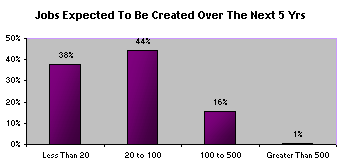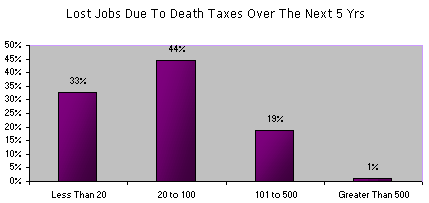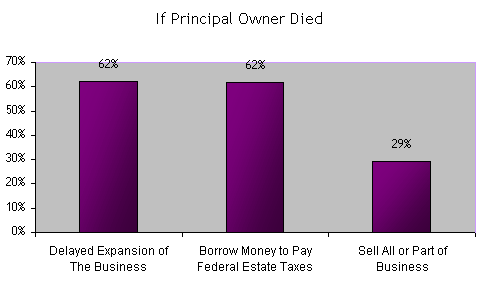|
Tax, Budget and Corporate Finance Issues |
||
 Printer friendly version
of this page
Survey on the Impact of the Death Tax on Small and
Medium Manufacturers
June
2000 Printer friendly version
of this page
Survey on the Impact of the Death Tax on Small and
Medium Manufacturers
June
2000Executive Summary The following report summarizes the results of a survey of small and medium companies that are members of the National Association of Manufacturers (NAM). The results were tabulated by RSM McGladrey, Inc. The survey attempts to quantify the burden of the current federal estate and gift taxes on small and medium manufacturers in terms of planning costs, lost jobs and the impact on planning and investment decisions. The NAM sent the survey to 1,800 members; the results are based on responses from 300 companies. Key Findings
Survey Results 1. Profile of Respondents In May 2000, the National Association of Manufacturers sent out a survey on estate taxes to 1,800 of NAM’s small and medium manufacturers.1 The survey results are based on responses received from 300 companies.2 The vast majority of the respondents (97 percent) are privately owned and operated family businesses. The companies are almost evenly split between companies owned for one, two or three or more generations. As indicated in the graph below, most of the companies (78 percent) have a fair market value of $3 million or more, with 38 percent valued at more than $10,000,000. More than half of the respondents (60 percent) have 100 or fewer employees, and 30 percent employ between 100 and 500 employees.
2. Planning for the Death Tax Over the past five years, more than 40 percent of respondents spent a total of more than $100,000 on attorney and consultant fees; life insurance premiums; and other planning expenses. Almost one quarter incurred expenses totaling more than $300,000.
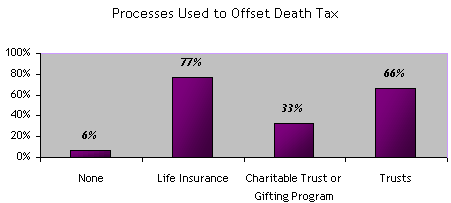 Based on
the survey results, life insurance is the most popular planning
device, with more than two-thirds (77 percent) implementing this
technique. Respondents also utilize charitable trust or gifting
programs (33 percent), with more than two-thirds setting up other
types of trusts. A mere 6 percent of respondents do not use any
planning devices. Based on
the survey results, life insurance is the most popular planning
device, with more than two-thirds (77 percent) implementing this
technique. Respondents also utilize charitable trust or gifting
programs (33 percent), with more than two-thirds setting up other
types of trusts. A mere 6 percent of respondents do not use any
planning devices.
3. Potential Impact of Tax on Job Creation
4. Potential Impact of Tax on Business Beyond the impact on job creation, the federal estate tax would have additional significant negative impacts on survey respondents if the principal owner of the business died today. Roughly two-thirds of the companies would have to delay, substantially curtail or abandon business expansion plans; and/or have to borrow money to pay federal estate taxes. More dramatically, nearly one-third of the respondents (29 percent) said that the family would be forced to sell all or part of the business to pay the federal estate tax.
1. Generally, companies with 500 or fewer employees are considered small; companies with between 500 and 999 employees are considered medium. 2. In some cases, percentages total more than 100 percent because respondents had the option of choosing more than one answer. THE NATIONAL ASSOCIATION OF MANUFACTURERS The National Association of Manufacturers – "18 million people who make things in America" – is the nation’s largest and oldest multi-industry trade association. The NAM represents 14,000 members (including 10,000 small and mid-sized companies) and 350 member associations serving manufacturers and employees in every industrial sector and all 50 states. Headquartered in Washington, D.C., the NAM has 10 additional offices across the country.The NAM’s mission is to enhance the competitiveness of manufacturers and improve American living standards by shaping a legislative and regulatory environment conducive to U.S. economic growth, and to increase understanding among policy-makers, the media and the general public about the importance of manufacturing to America’s economic strength. |
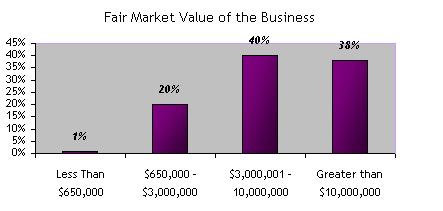
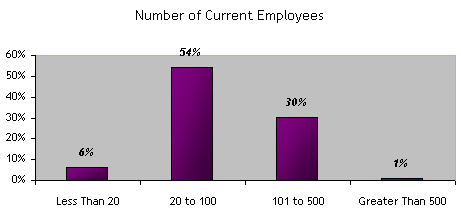
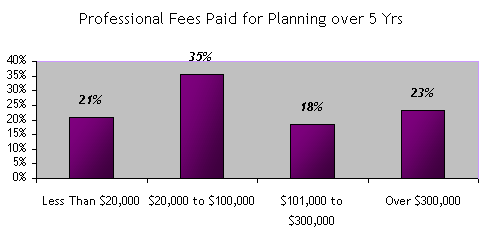
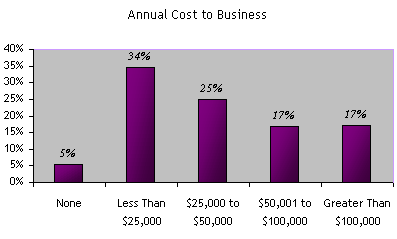
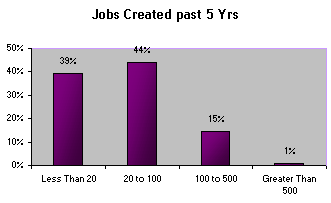 Over
the past five years, more than 40 percent of the companies have
created anywhere from 20 to 100 jobs, with an additional 15
percent creating up to 500
new jobs. Respondents expect this trend to continue, with almost the
same results expected over the next five years.
Over
the past five years, more than 40 percent of the companies have
created anywhere from 20 to 100 jobs, with an additional 15
percent creating up to 500
new jobs. Respondents expect this trend to continue, with almost the
same results expected over the next five years.
